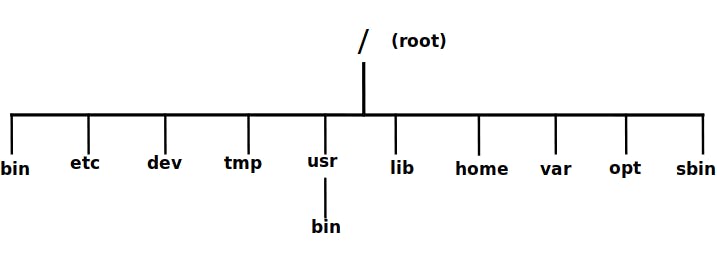Unix file system
The UNIX file system always begins with the directory called root. It is considered as the parent directory and it is denoted by ‘/’ slash. This directory will have sub-directories. The subdirectories can have other subdirectories or files.
Every directory will branch from root.
bin: contains the binary files i.e. executables of most of the unix commands.
ex: cat, ls etc
etc: contains system administration file. It can be used by system administrator only.
ex: passwd, profile etc
dev: contains all input and output device related files means each and every physical device contains logical name.
ex: terminals, printers, disk drivers etc Separate file for each device. Each device is implemented as a file.
tmp: contains temporary files created by UNIX or by other users. UNIX will dispense the temp files. Will be deleted by UNIX at shutdown time.
ex: swap files
usr: contains several user directories. It is created by system administrator when creating new accounts. Each user is allowed to work in his/her directory often known as home directory. User can organise his directory by creating sub directories.
home: contains home directories.
lib: contains library functions, header files. The programmers under UNIX will use these libraries.
var: contains messages. All messages are stored in var directory.**
